On July 11, 2025, the 47th World Heritage Conference was successfully held in Paris, co hosted by the UNESCO World Heritage Sites Interpretation and Exhibition Centre (WHIPIC) and the African World Heritage Fund (AWHF), with support from the UNESCO Asia Pacific World Heritage Training and Research Centre (WHITR-AP), the Lucio Costa Heritage Management Training Centre (CLC) in Brazil, and the former Arab World Heritage Centre (ARC-WH). The theme of this side event is "Heritage Interpretation: Connecting Past and Present Regional Practices", aiming to showcase innovative cases of promoting inclusive heritage interpretation in various regions, and promote understanding, cooperation, and capacity building at the global level. Dr. Li Guanghan, Executive Director of the WHITR-AP Beijing Branch of the UNESCO Asia Pacific World Heritage Training and Research Center, was invited to attend the conference as a guest speaker.
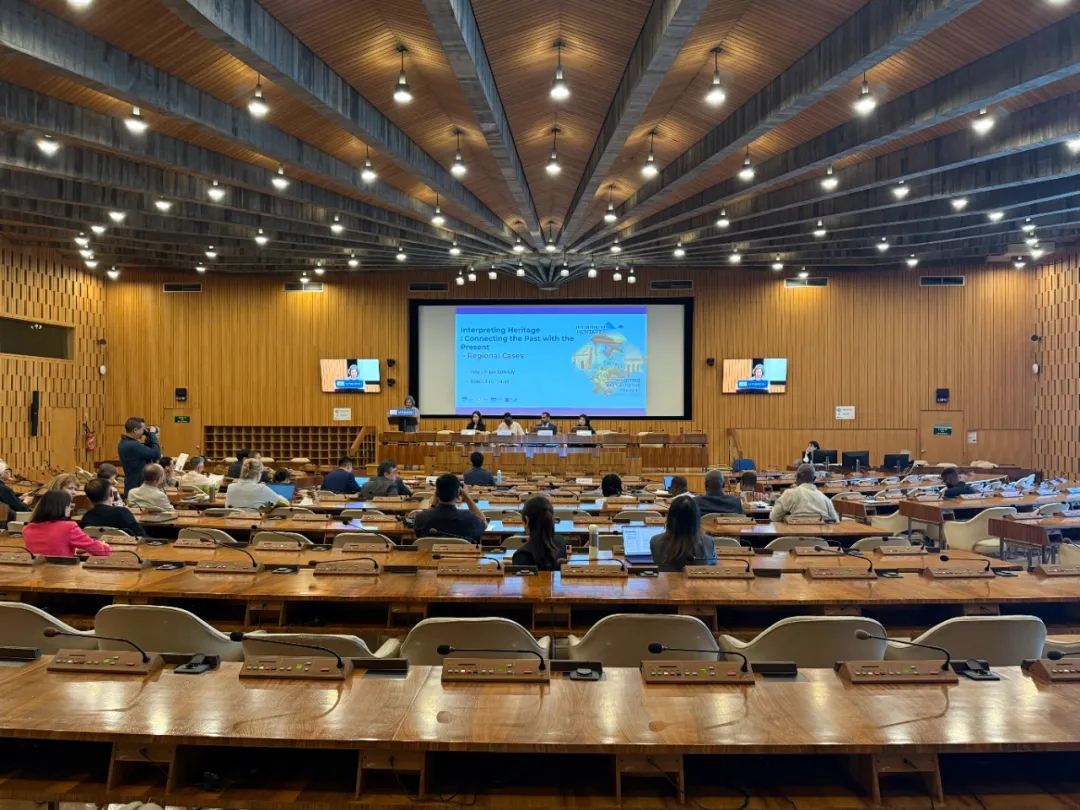
Opening speech
International Interpretation Strategy and C2C Collaboration Vision
Ms. Jyoti Hosagrahar, Deputy Director of the World Heritage Center, pointed out in her opening speech that heritage interpretation is irreplaceable in exploring the value of World Heritage, promoting public understanding and participation. She emphasized that good heritage interpretation not only requires technical and professional skills, but also the establishment of an inclusive system that allows professionals in various regions to develop interpretation strategies and promote implementation based on local realities. She believes that heritage interpretation should also become a process of inspiring resonance and promoting harmony, so continuous information sharing and communication are particularly crucial. Ms. Jyoti specifically mentioned that WHIPIC has always adhered to the values of "diversity, respect, communication, cooperation, and participation", and is committed to transforming heritage interpretation into a bridge for global dialogue. She highly praised the collaborative attempt initiated by multiple C2C centers, believing that it not only demonstrated excellent explanatory cases, but also provided a replicable and promotable cooperation model.
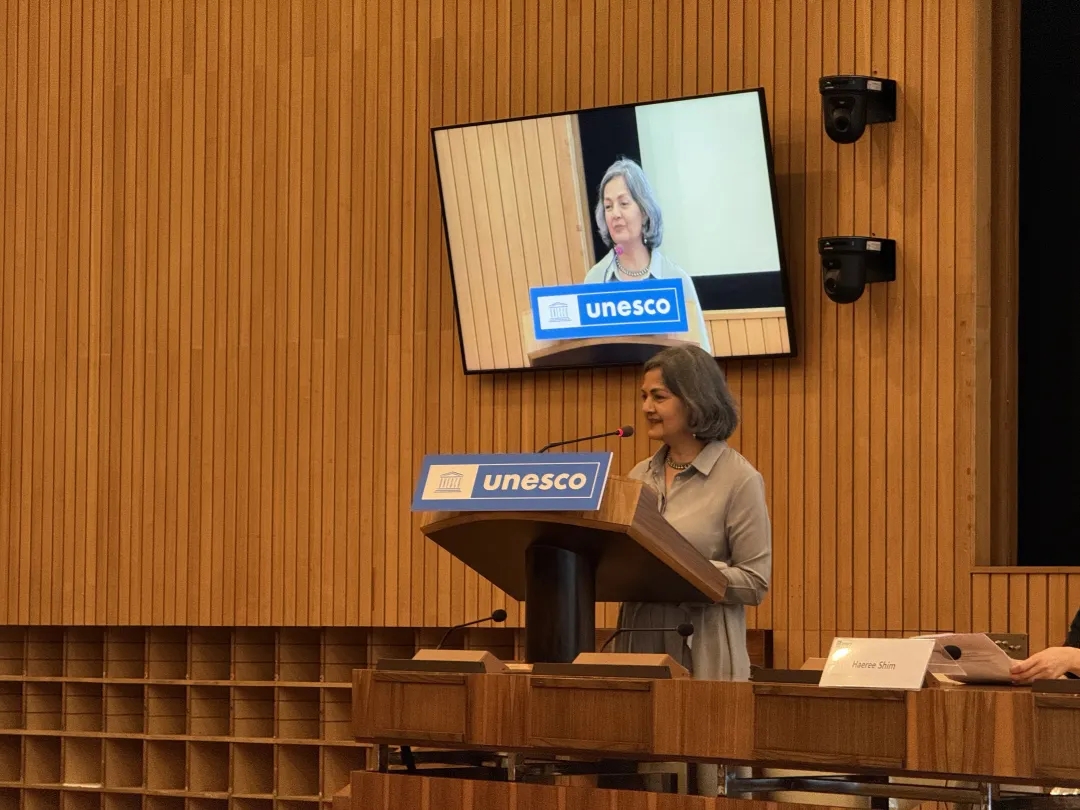
Speech by Ms. Jyoti Hosagrahar, Deputy Director of the World Heritage Center
Chang Nan Hong, Director of the UNESCO World Heritage Sites Interpretation and Exhibition Centre (WHIPIC), subsequently stated that in recent years, WHIPIC has been committed to promoting "inclusive and regionalized" heritage interpretation cooperation programs. In developing countries, especially in Asia, Africa, and Latin America, strategies should be tailored to local conditions, taking into account the cultural characteristics and educational resources of local communities. He pointed out that interpretation is not limited to explanation and display, but also a powerful tool to connect the public with heritage, contemporary and historical. He emphasized that WHIPIC will continue to support capacity building efforts in various regions and welcomes joint research and experimental projects between different centers.
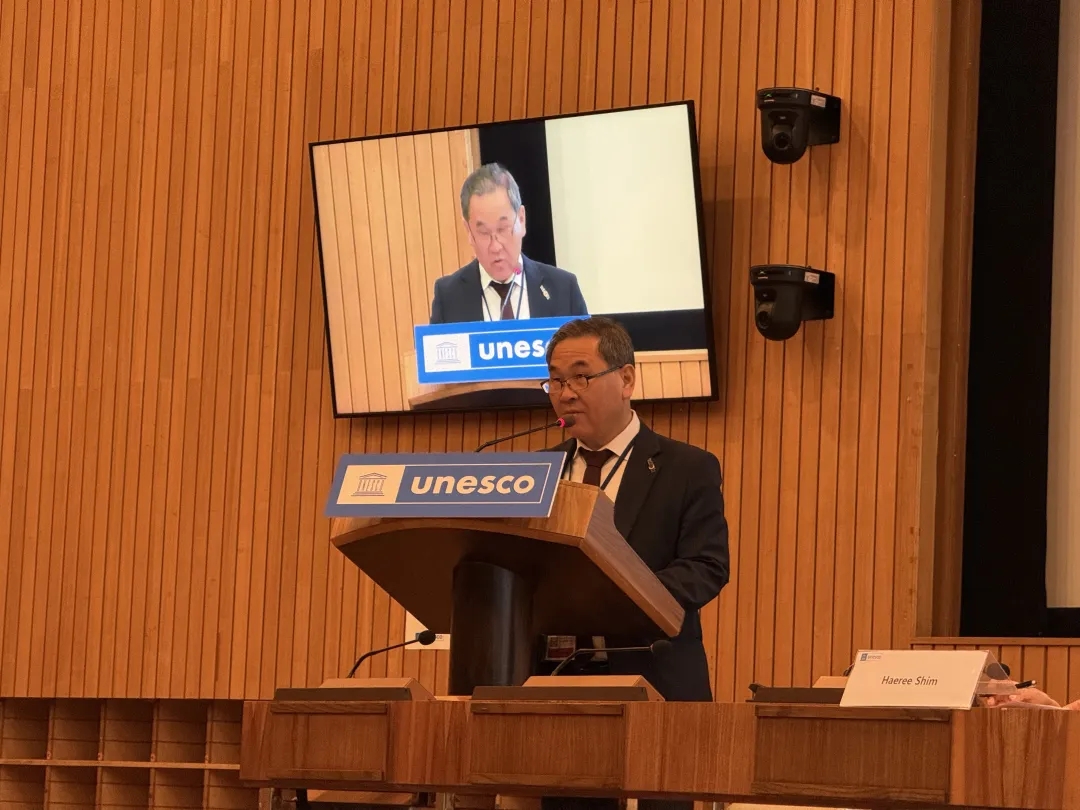
Speech by Mr. Chang Nan Hong, Director of WHIPIC
In Hun Song, Director of the Policy Department of the Korean Cultural Heritage Agency, pointed out that South Korea has long supported various projects of the World Heritage Committee and related Category 2 Centers in heritage protection and interpretation. He emphasized that the value of heritage interpretation lies not only in conveying information, but also in promoting cross-cultural understanding, strengthening consensus and respect. He stated that South Korea will continue to support heritage interpretation as a platform for global governance and education, contributing to the construction of a peaceful and sustainable future society. He expressed appreciation for the spirit of multi-party collaboration demonstrated at this conference and encouraged all participants to engage in in-depth dialogue on practical interpretation.
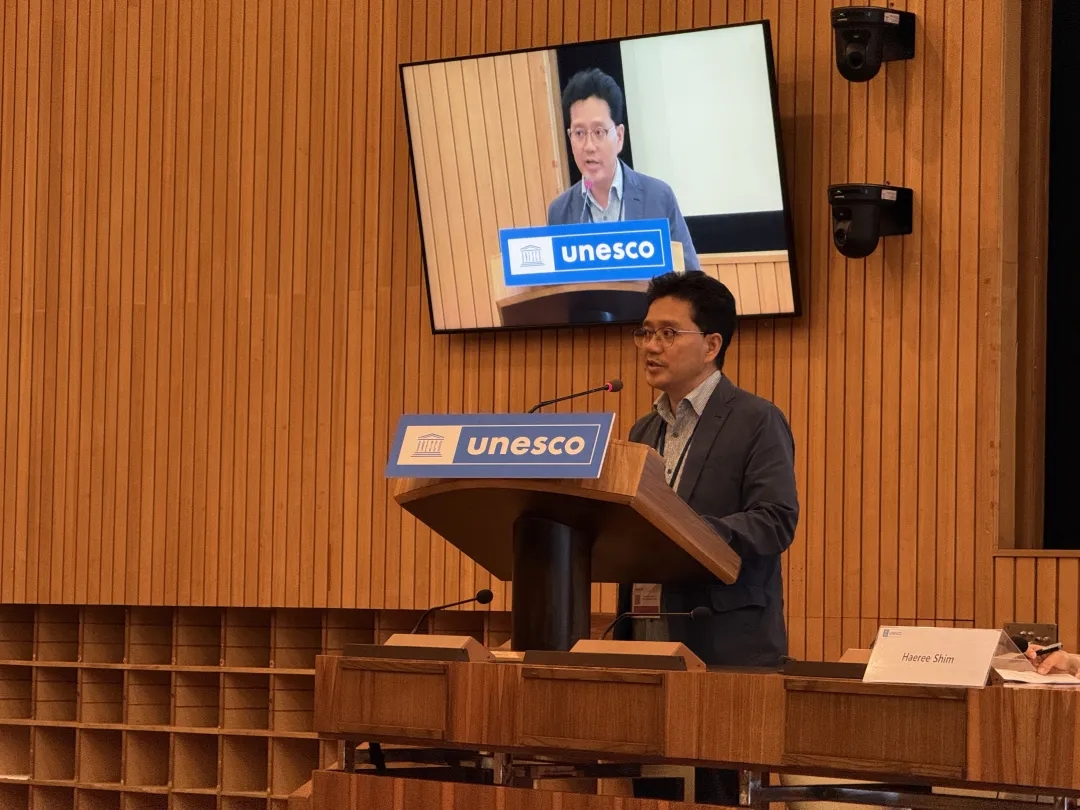
Speech by Mr. Hun Song,Director of the Policy Department of the Korean Cultural Heritage Agency
Heritage Interpretation
Defining Development and Global Adaptability
As one of the organizers, Ms. Haere Shim, Director of the Education and Network Office at the UNESCO World Heritage Sites Interpretation and Exhibition Centre (WHIPIC), reviewed the theoretical and policy evolution of "heritage interpretation". From Freeman Tilden's "Interpreting Our Heritage" in 1957, which first proposed a definition, to ICOMOS's "Charter for Interpreting and Displaying Cultural Heritage" in 2008, heritage interpretation gradually emphasizes "co creation of meaning", inspiring public sense of belonging through communication, participation, and experience, and promoting deep connections between people and heritage sites. Interpretation is no longer a one-way knowledge output, but a way to promote public participation and share heritage values, providing a common understanding framework for managers, applicants, and communities, and strengthening the identification and dissemination of heritage values. Ms. Shim pointed out that there are significant differences in the demand for heritage interpretation in different regions, which has led to in-depth exchanges between the two centers of various categories in this side event. In Africa, heritage interpretation focuses on enhancing community identity and promoting heritage conservation; In the Arab region, the focus is on post-war reconstruction, site cognition reshaping, and sustainable tourism development; In Asia, emphasis is placed on the coordinated expression of tangible and intangible cultural heritage, and it is integrated into the national governance framework through community participatory management.
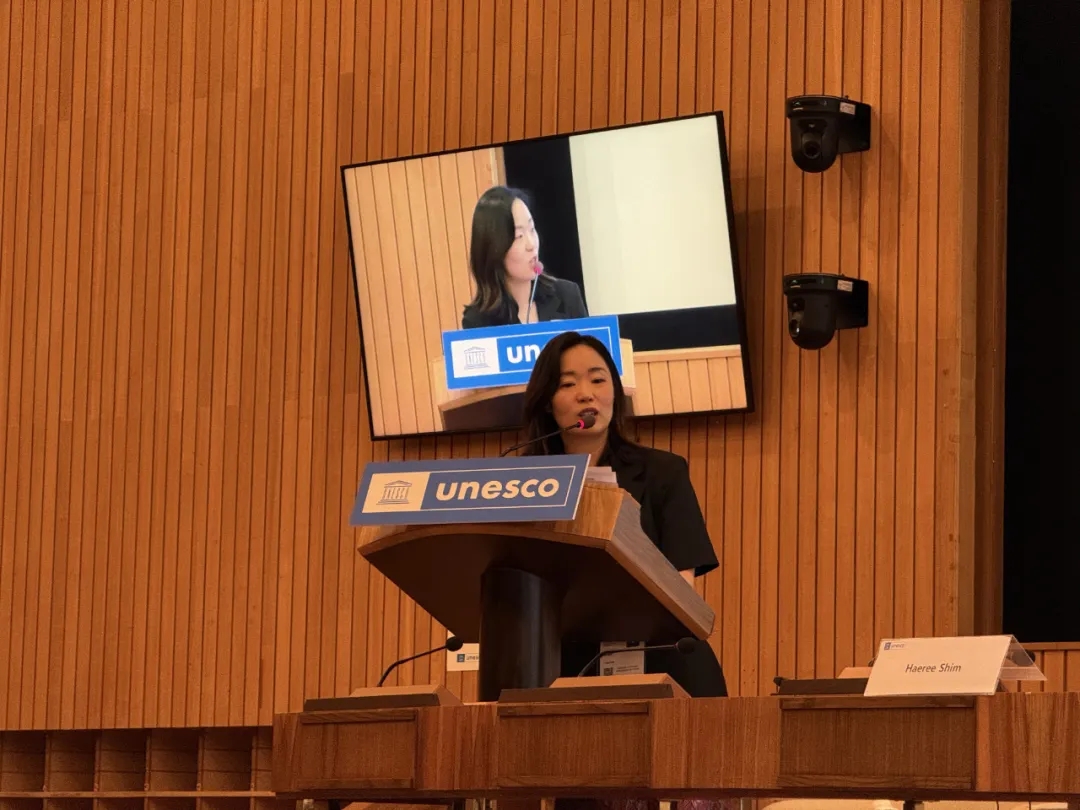
Director of WHIPIC Education and Network Office
Ms. Haerae Shim's speech
Preliminary Agenda
Albino Jopela, Executive Director of the African World Heritage Fund (AWHF), conducted an in-depth analysis of the core challenges facing the interpretation of African heritage, particularly how to balance multiple historical memories in the context of decolonization. He pointed out that many important World Heritage sites in Africa, such as the Great Zimbabwe Site in Zimbabwe, Robben Island in South Africa, and the Rwanda Genocide Memorial Site, not only have outstanding cultural value, but also carry complex historical and political connotations. Their interpretation work often falls into the tension between national identity construction and historical narratives. Taking Mozambique Island as an example, this heritage site has long been positioned as the starting point of Portugal's 16th century maritime expansion. This colonial perspective narrative ignores the collective memory of the local community about the history of the slave trade, reflecting the huge gap between internationally recognized heritage values and local perceptions. Jopela emphasized that this singular narrative issue is prevalent in heritage management in Africa, and there is an urgent need to establish a more inclusive interpretive framework. At present, AWHF has collaborated with WHIPIC for three consecutive years to carry out regional capacity building projects, promoting inclusive and community led interpretation strategies to be implemented in Africa.

Mr. Albino Jopela, Executive Director of AWHF, delivered a speech
Ebrahim Alkhalifa, former Deputy Director of the Arab Regional World Heritage Centre (ARC-WH), pointed out that the Arab region is promoting inclusive heritage interpretation and incorporating it into the core agenda of heritage site management and capacity building. At present, the region has 96 diverse and widely distributed World Heritage sites, facing challenges such as balancing development and protection, reconstruction in the context of conflicts and disasters, insufficient community participation, low information accessibility, and overall interpretation of the series of heritage sites. Since 2023, ARC-WH has collaborated with WHIPIC to conduct online workshops on sustainable management of Tunisian heritage sites, as well as a themed side event on "Understanding Heritage Interpretation Strategies and Practical Cases" at the 46th World Heritage Conference, promoting the shift from conceptual interpretation to practical application. Although some countries are facing conflicts and reconstruction pressures, the region has begun to incorporate interpretation plans during the application for World Heritage status, and introduce new methods through regional seminars, digital displays, and community participation programs to gradually improve the level of heritage governance.
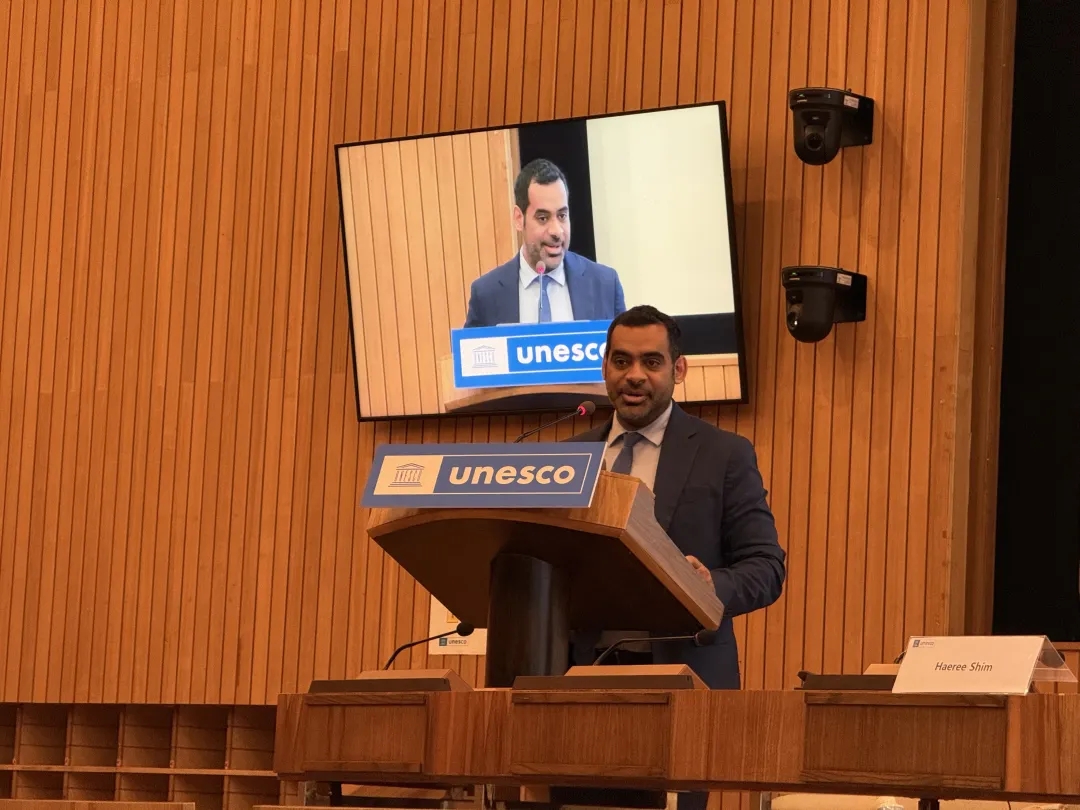
Speech by Mr. Ebrahim Alkhalifa, Deputy Director of ARC-WH
Dr. Li Guanghan, Executive Director of the WHITR-AP Beijing Branch of the UNESCO Asia Pacific World Heritage Training and Research Center, pointed out that the types of heritage in East Asia are complex, and many heritage sites have both material and intangible attributes. Based on the results of the comprehensive training workshop on East Asian heritage management organized by the Beijing branch center, WHIPIC, and UNESCO East Asia Regional Office at Peking University in 2024, she introduced several typical cases: the unique challenge faced by heritage interpretation in Japan's Okinoshima due to its forbidden and sacred nature. To address this limitation, Japan has adopted the approach of living heritage and strengthened collaboration between communities and belief systems; The Orkhon Valley in Mongolia, as a dual heritage of nature and culture, has frontline management personnel mostly from the field of nature conservation, and generally lacks the ability to interpret cultural heritage, highlighting the urgent need for interdisciplinary knowledge integration training; In the capital city of Hanyang, South Korea, heritage managers are engineering and technical personnel who face barriers in understanding intangible cultural heritage, reflecting the impact of differences in professional backgrounds on the development of interpretation strategies; The Grand Canal of China actively promotes public participation in interpretation through cultural group painting, exploring the integration path of heritage cognition and public education. She emphasized that future heritage interpretation capacity building projects should fully consider these cross disciplinary cognitive differences, strengthen the basic cognition of heritage management personnel, and promote the connection between heritage interpretation and daily community life through more flexible mechanisms.
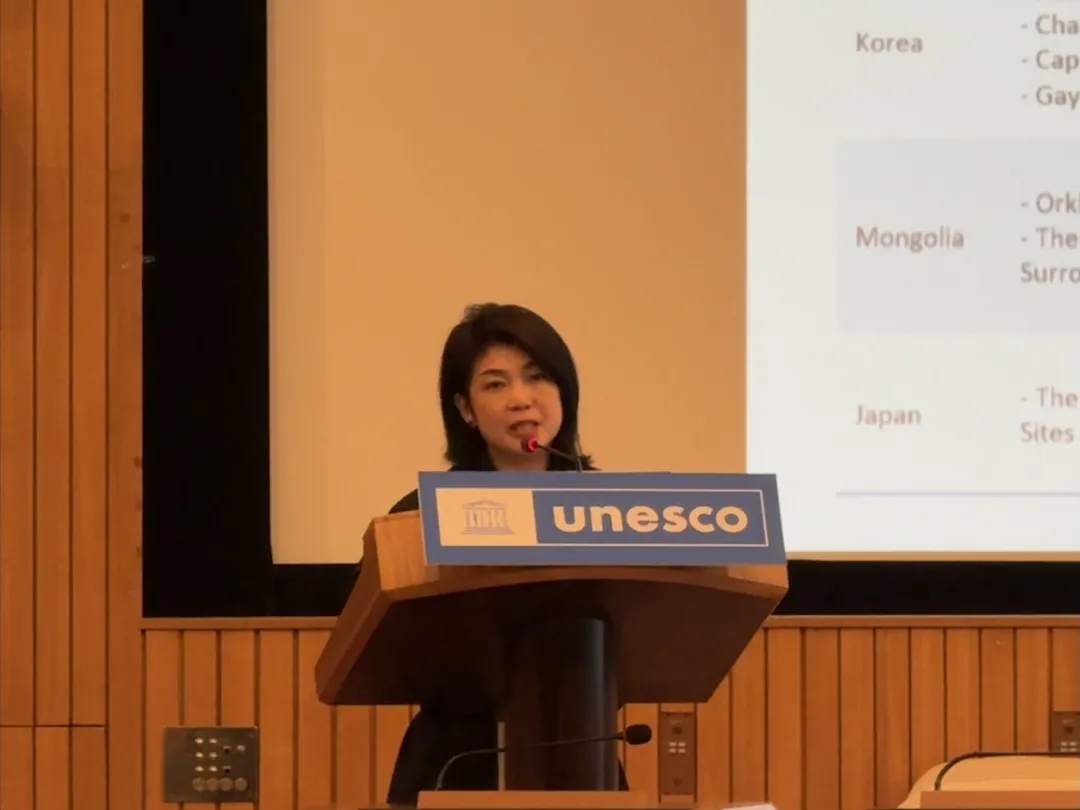
Dr. Li Guanghan, Executive Director of WHITR-AP Beijing, delivered a speech
The Lucio Costa Heritage Management Training Center (CLC) in Brazil introduced online the active promotion of community participatory heritage interpretation projects in recent years. Ms. Claudia Feieraend Baeta Leal highlighted the cooperation achievements between CLC and WHIPIC at the 8th Coordination Meeting of World Heritage Category 2 Centers in 2023, and jointly signed the "UNESCO Declaration of Understanding and Cooperation on World Heritage Related Secondary Centers". Mr. Rafael Zamorano Bezerra shared his collaboration with WHIPIC on the "S í tio Roberto Burle Marx Site Inclusive Exhibition Project" in 2024. This project invites local residents, managers, and cultural inheritors to participate through research, workshops, and other methods, forming a diverse perspective of exhibition content and educational curriculum. The three-day workshop covers aspects such as value recognition, narrative discussion, and ultimately showcases materials co created by the community, reflecting a bottom-up approach to interpretation.

Lucio Costa Heritage Management Training Center in Brazil shares online
discussed
From experience differences to cooperation prospects
In the Q&A session, participants raised questions and discussed issues such as international exchange programs, capacity building, and gaps in professional skills. WHIPIC introduced how its international exchange program helps professionals from African heritage sites deepen their interpretive practices and promote knowledge flow back. AWHF points out that what urgently needs to be improved is not just infrastructure, but how to express complex ideas in local languages and break the "soft skills" of single narratives. WHITR-AP Beijing emphasizes that most heritage sites lack dedicated interpreters, and on-site managers have significant gaps in understanding intangible heritage and community communication, requiring systematic training. The participants also called for the pre application of interpretation work to the early stage of World Heritage application, and emphasized the cultivation of interpreters' abilities in interdisciplinary backgrounds.
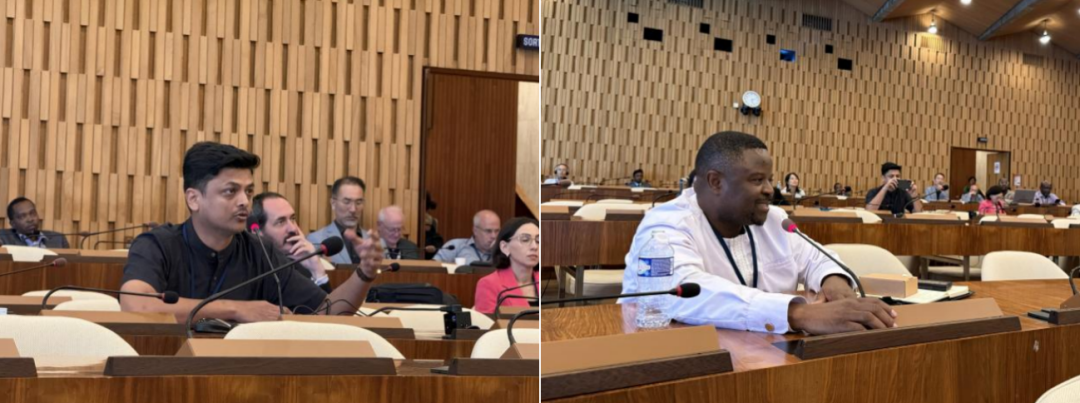
On site attendees ask questions and exchange ideas
conclusion
Make 'understanding' the common language of world heritage
Interpretation is not only about the accuracy of narration, but also about the diversity of participation and the transparency of the process. This side event serves as a model collaboration between Class II centers, showcasing the differentiated practices of each region and laying the foundation for establishing a global heritage interpretation collaboration network in the future. As Ms. Jyoti Hosagrahar, Deputy Director of the World Heritage Center, said, "Dialogue and communication are the most precious gifts bestowed upon us by World Heritage
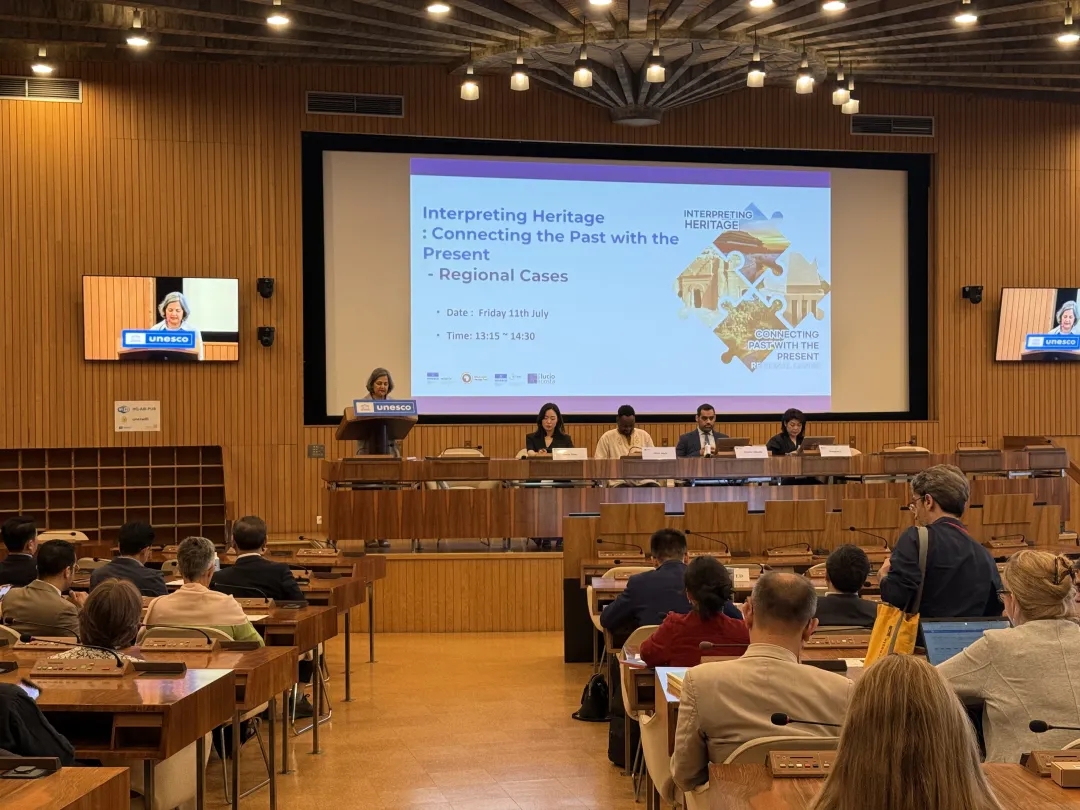
On site border meeting
